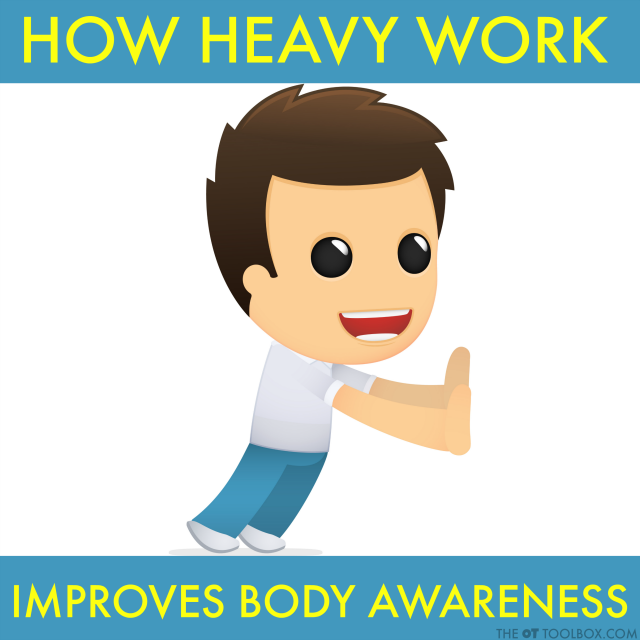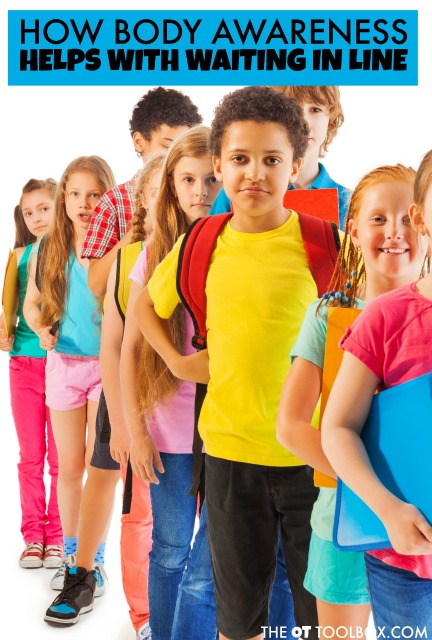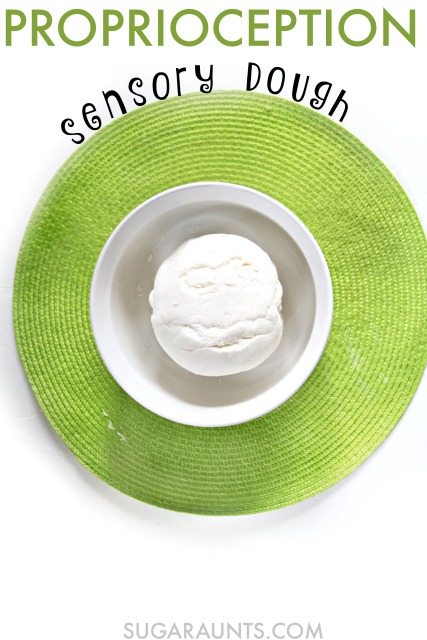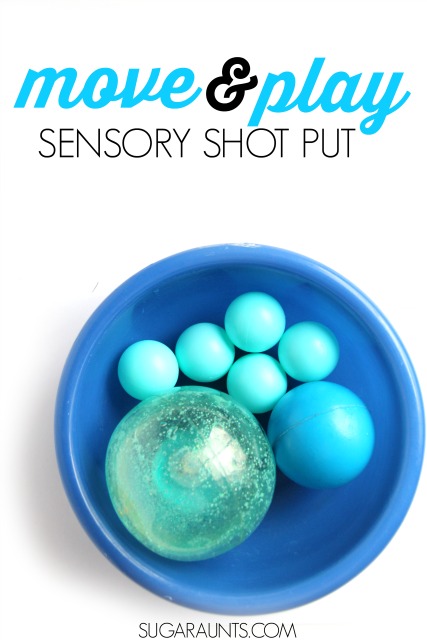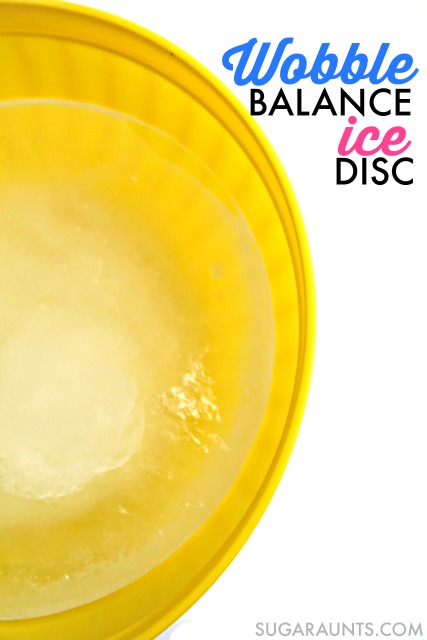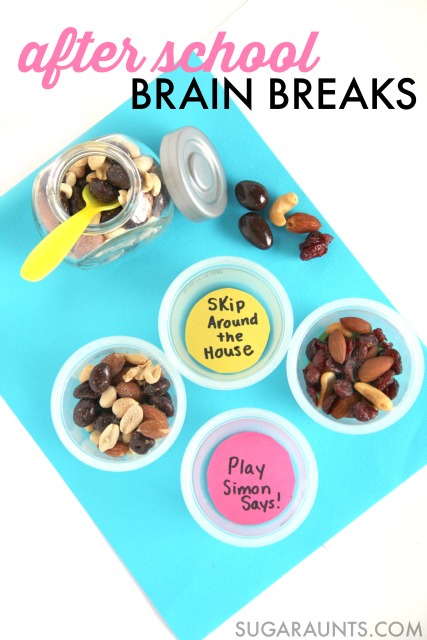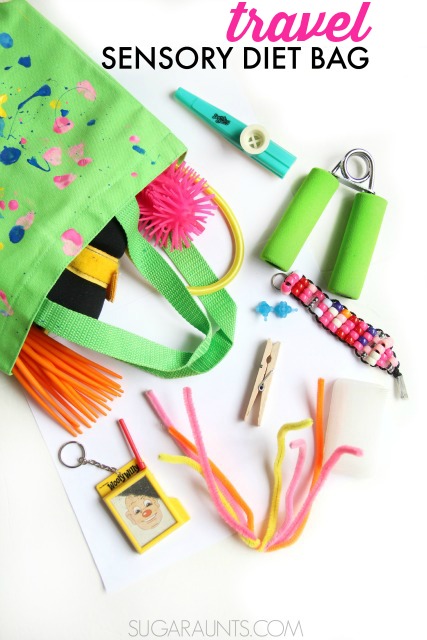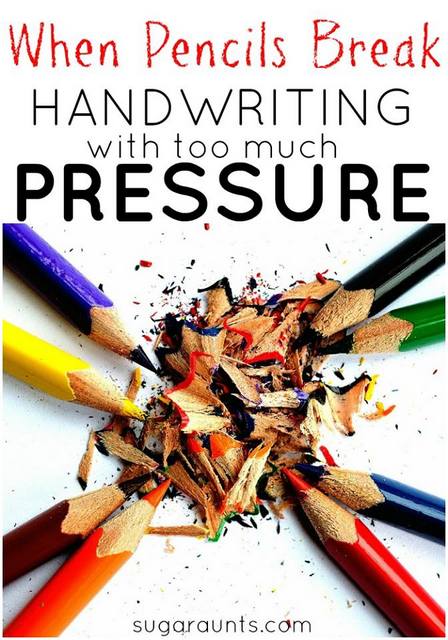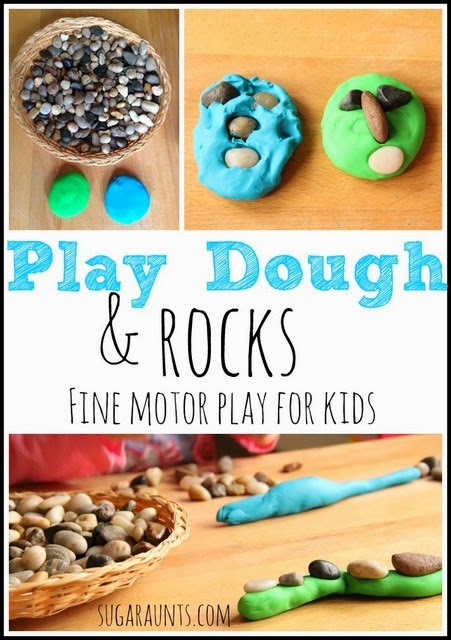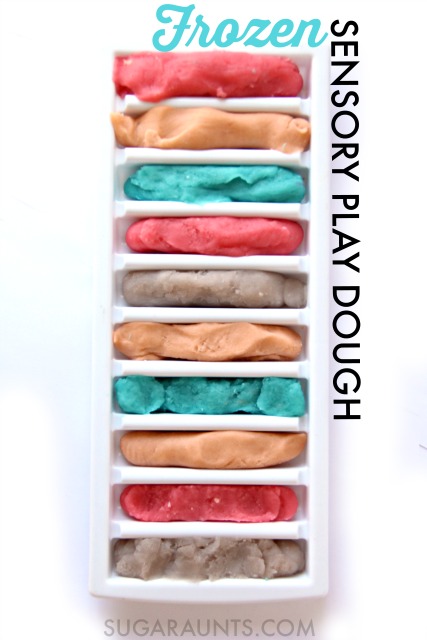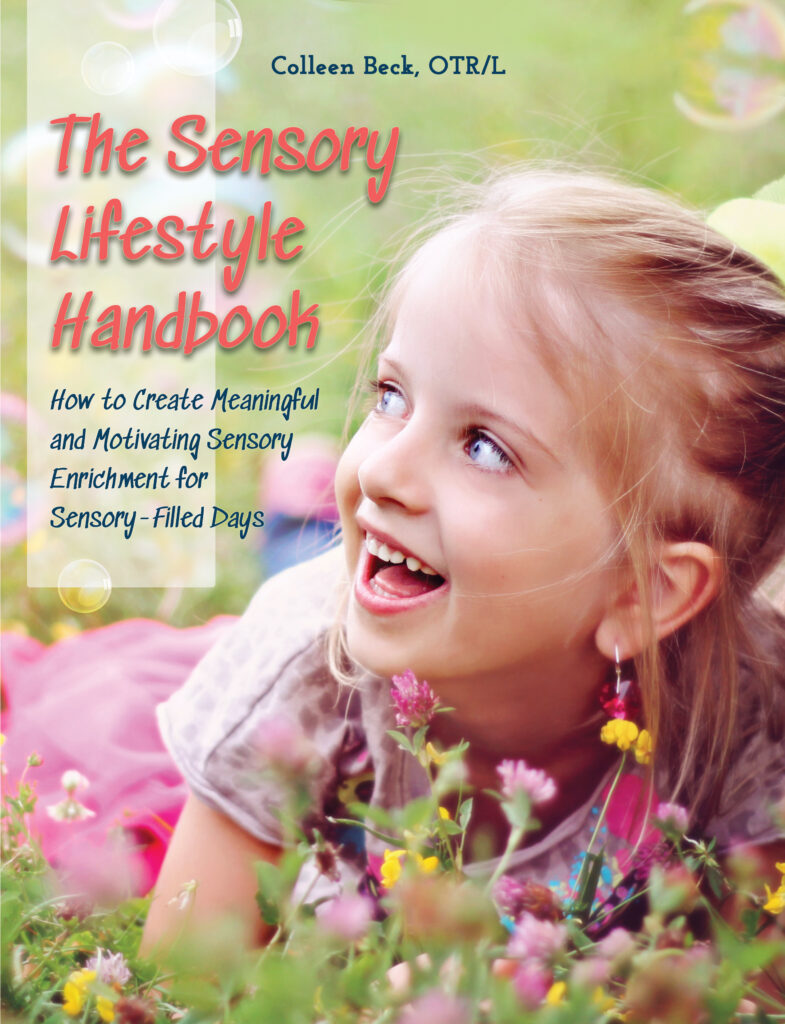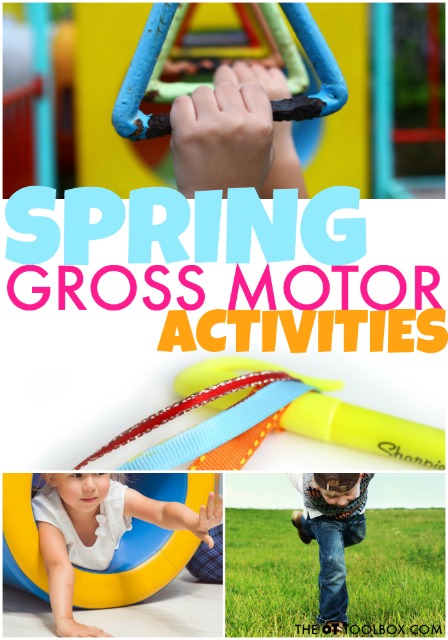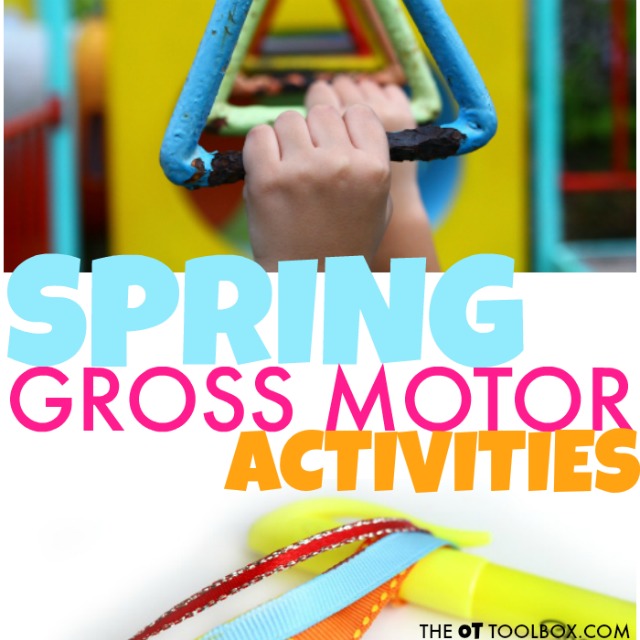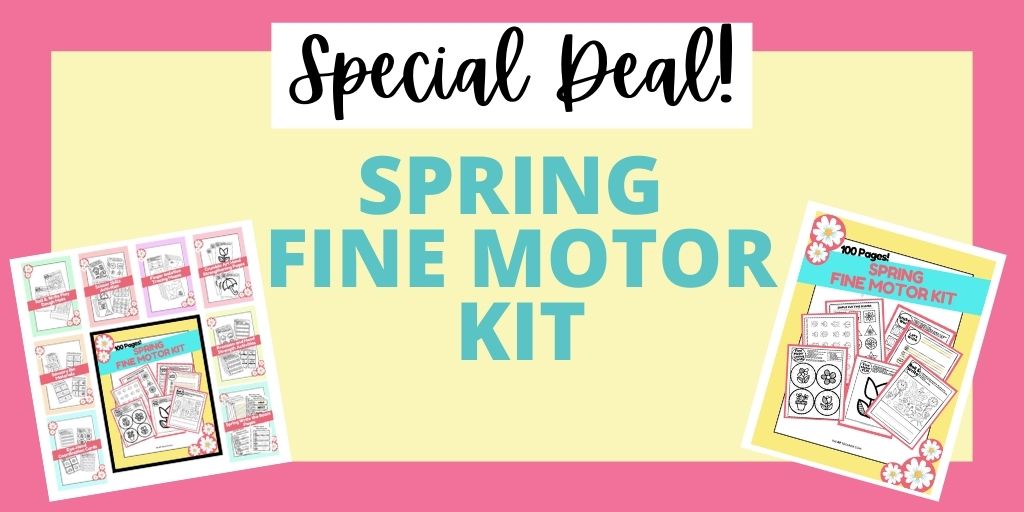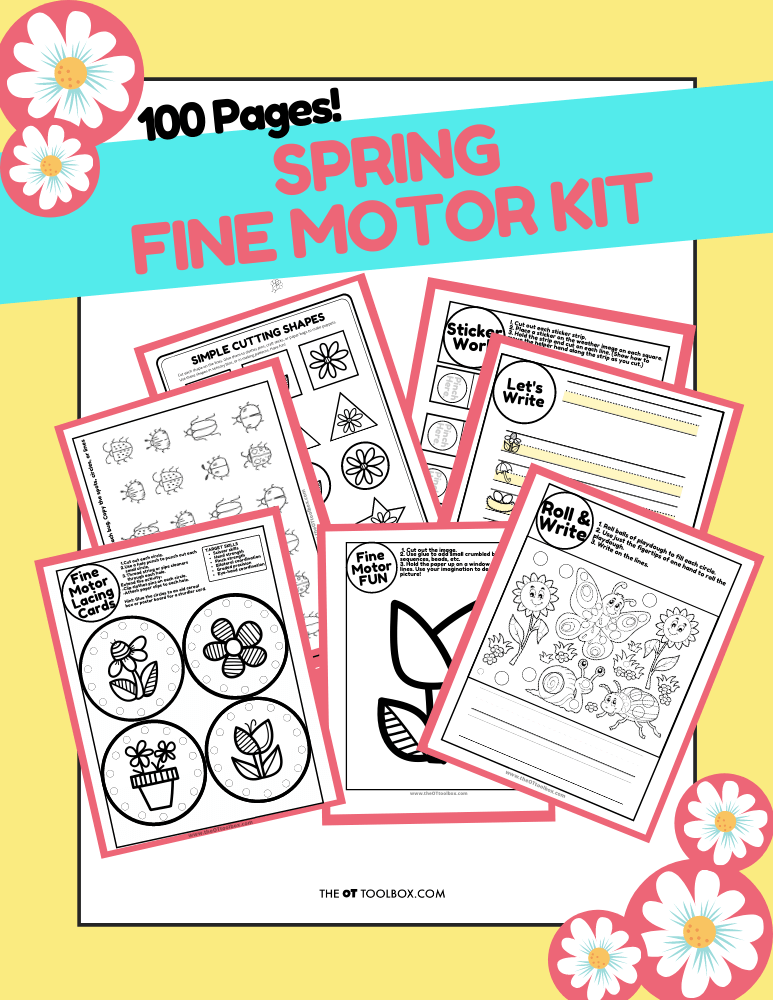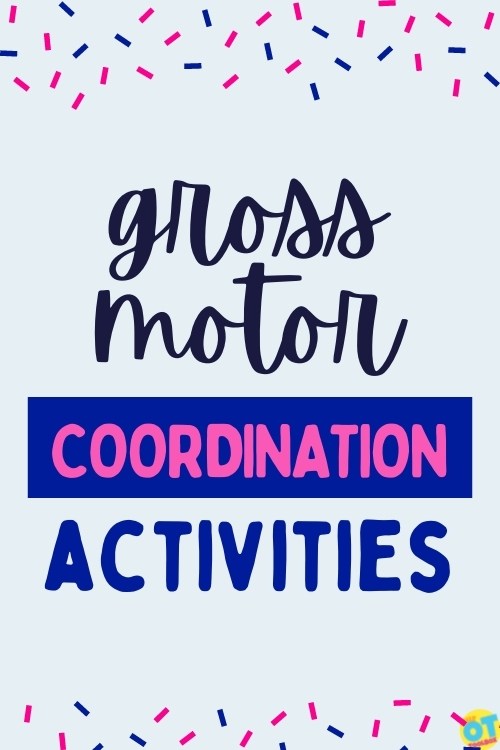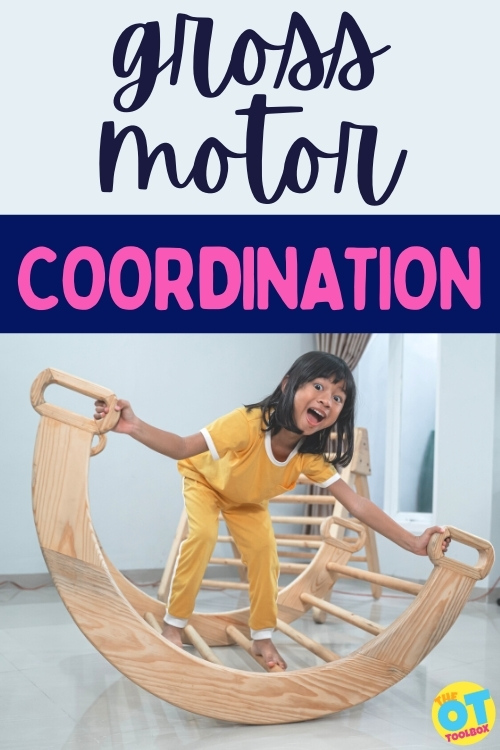If you’ve ever run a therapy session with a fun game of Simon Says, than you know the challenge of coming up with effective Simon Says commands on the spot. The beauty of a good game of Simon Says is that you can target any gross motor, fine motor, sensory motor, and visual motor skill area that you need to, making it the perfect gross motor coordination game that supports a variety of skills.
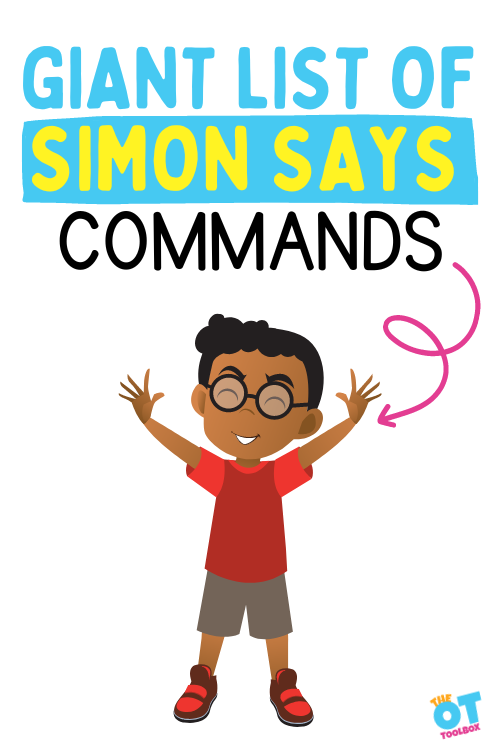
Simon Says Commands
Woohoo, it’s Simon Says for OT! Who doesn’t love a good game of Simon Says? It’s a classic game that builds a variety of skills without kiddos knowing it.
Below, you’ll find a great list of therapist-approved Simon Says game commands and, you can grab a Simon Says commands pdf so you can print off these game ideas and use them in any therapy session, or as a brain break in the classroom or home, too.
Let’s cover all of the Simon Says ideas!
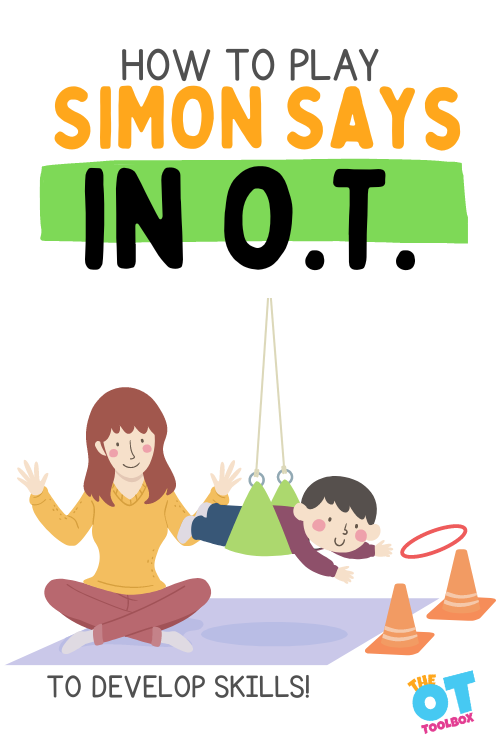
How to Play Simon Says
If you’ve never heard of Simon Says or don’t have a clue what it is, it’s a fun game that is easy to implement in any location.
First, you identify one player for the role of Simon and that player will give the other players commands for actions to perform. (There are many targeted goal areas identified with commands listed later in the post.)
Second, the game has a trick with it, Simon MUST preface the command by saying, “Simon Says”, or the command is NOT to be followed.
If a player follows that direction and completes the movement when “Simon” doesn’t say “Simon Says”, they are out of the game or can lose one of their tally strokes or chips that is given to each player before play.
If they DO NOT follow one of the stated Simon Says commands, they are out or lose a stroke or chip too.
Third, the last player standing or the player with the last chip or tally stroke is the winner.
Simon Says Examples:
- Simon: “Simon Says hop on one foot.”
- Other players: Correctly follow the direction and hop on one foot.
- The players that completed the correct action stay in the game or can stay in the game and do not lose a token or tally chip/tally mark.
- Simon: “Simon Says hop on one foot.”
- Other players: Incorrectly do not follow the direction.
- The players that did not complete the correct action are out of the game or can stay in the game and lose a token or tally chip/tally mark.
- Simon: “Hop on one foot.”
- Other players: Incorrectly follow the direction and hop on one foot.
- The players that completed the incorrect action (Simon didn’t say “Simon Says”!) are out of the game or lose a token or tally chip/tally mark.
- Simon: “Hop on one foot.”
- Other players: Correctly do not follow the direction and do not hop on one foot.
- The players that did not complete the incorrect action (Simon didn’t say “Simon Says”!) stay in the game or do not lose a token or tally chip/tally mark.
Easy, right? Not too fast friends! A child’s (and adults’) attention, impulsivity, and patience can play a role in their ability to listen, act, and wait while playing this game.
Simon Says is actually a really great game for executive functioning skills, and specifically a game to
Think about each child and what kind of commands you may need to give them to help them play successfully.
Younger students or those working to improve the cognitive skill of following sequences can improve these areas with certain adaptations. Give them simple commands that have few words and one step. Think about saying something like, “Simon Says clap your hands” vs. saying, “Simon Says spin around and then clap your hands”, see the difference? This will help a child focus on one skill at a time and then build from there as they age or become better at following multiple directions.
If a child struggles with verbal or processing skills, consider the use of a visual choice board, like this one by Panda Speech Therapy, that displays someone speaking coupled with a visual that demonstrates the action that Simon Says to do. This is a great modification to help children that need this type of support to be successful during play or even those who are new to learning how to play the game.
Think about the OT skills that can be facilitated with this game:
- Following and giving directions
- Attention and listening
- Receptive language skills
- Impulsivity
- Body awareness
- Balance
- Body movement
- Motor planning
- Motor memory
- Sensory input for self-regulation
- Sportsmanship
- Social skills
- Cooperation
- Sequencing skills
- With therapy equipment, range of motion, muscle strengthening, and spatial relationships
Target whatever area you need to with children based on their goals and you’ve got a fun time with focus!
Think about the social skills that can be targeted while following and giving multiple skill-driven directions – don’t forget to either simply say the direction or add, “Simon Says” to give kiddos the true direction to DO vs. the fake direction to REMAIN STILL.
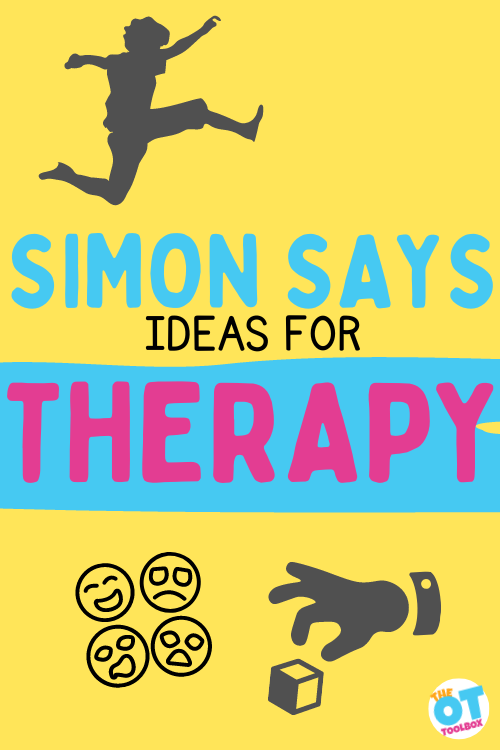
Simon Says Ideas
The list of Simon Says ideas below are separated by area of development. You’ll find specific movement ideas for:
- Visual motor skills
- Fine motor skills
- Gross motor skills
- Sensory motor skills
- Social skills
- Emotional skills
- Oral motor skills
Simon Says Commands to Target Visual Motor Skills
- Draw a row of circles
- Draw a face
- Draw a person
- Trade drawing tools with your neighbor
- Use different colors and write the letters of your first name
- Write the ABCs
- Build a block tower
- Build block stairs
- Build a block pyramid
- Write the numbers 1-10
- Toss a ball up to self and catch
- Walk a ball on the wall
If you need more visual motor command ideas to help, look at these fun resources:
Rainbow Visual Motor Slide Deck at The OT Toolbox
Flower Visual Motor Slide Deck at The OT Toolbox
Simon Says Commands to Target Fine Motor Skills
- Do finger taps to the thumb on both hands
- Make the okay sign
- Make the telephone sign with each hand
- Snap your fingers
- Push your fingertips together
- Clap your hands
- Rotate a pencil from writing to erasing
- Do pencil push-ups
- Do pencil walk up and down the shaft
- Wiggle the fingers on both hands
- Do finger pull-ups on both hands
- Do victory sign
- Make the ‘I love you’ sign
If you need more fine motor command ideas to help, look at these fun resources:
Fine Motor Skills Needed for School at The OT Toolbox
Heavy Work for Little Fingers at Your Kids OT
Simon Says Commands to Target Gross Motor Skills
- Do 10 wall push-ups
- Do 5 sit-ups
- Do 5 planks
- Do 8 body bridges
- Do 5 lunges
- Do 8 squats
- Do 6 hand presses
- Do 8 cross crawls
- Walk like a crab
- Walk like a bear
- Hop like a kangaroo
- Walk like a cat
If you need more gross motor command ideas to help, look at these fun resources:
Sports Gross Motor Slide Deck at The OT Toolbox
Superhero Gross Motor Slide Deck at The OT Toolbox
Simon says Commands to Target Sensory Motor Skills
- Stretch to the sky and then to the floor
- Wiggle your body all around
- Give yourself a hug
- March in place
- Sway your body left to right
- Spin around in a circle
- Do 5 deep breaths
- Do 5 long blows
- Do floor push-ups
- Sit and rock back and forth
- Army crawl in a line
- Walk forward and backward
If you need more sensory motor command ideas to help, look at these fun resources:
Alerting and Calming Sensory Strategy Cards at The OT Toolbox
Heavy Work Movement Cards at The OT Toolbox
Outdoor Sensory Diet Cards at The OT Toolbox
Deep Breathing Exercise Cards at The OT Toolbox
Simon Says Commands to Target Social Skills
- Look to your neighbor and say, “Hello.”
- Shake your neighbor’s hand
- Say a positive affirmation statement to the group
- High-five a friend
- High ten your therapist
- Look at a neighbor and smile
- Look at a neighbor and give a thumbs-up
- Look at a neighbor and introduce yourself
- Look at a neighbor and say, “Thank you.”
- Give a compliment
- Give an apology
- Invite someone to play
If you need more social command ideas to help, look at these fun resources:
Self-Awareness Activities Slide Deck at The OT Toolbox
Simon Says Commands to Target Emotions
- Make a smiley face
- Make a frowning face
- Make a scared face
- Make an angry face
- Make a surprised face
- Make a tired face
- Show being shy
- Show being worried
- Show being embarrassed
- Show being sick
- Show being proud
- Show being scared
If you need more emotional command ideas to help, look at these fun resources:
Emotions Cards at Growing Hands-On Kids
Simon Says Commands to Target Oral Motor Skills
- Stick out your tongue
- Open and close your mouth
- Wiggle your tongue from side to side
- Blow a kiss
- Blow bubbles
- Smack your lips together
- Touch your nose with your tongue
- Massage your jaws with your fingertips
- Pull the corners of your mouth into a smile
- Scrunch up your lips and nose
- Push your tongue into your right cheek
- Push your tongue into your left cheek
If you need more oral motor command ideas to help, look at these fun resources:
Oral Motor Exercises at The OT Toolbox
Themed Oral Motor Activities and Exercises at the OT Toolbox:
- Summer
- Animal Cracker
- Plastic Egg Boats
- Easter Bunny
- Plus, don’t forget these Deep Breathing Exercise Cards, too!
Simon Says Ideas for the Alphabet
If you are looking for a combination of Simon Says Commands that address multiple areas, you can find a list of these below from A-Z. Enjoy!
A – Air write your name
B – Blow pretend bubbles
C – Cross crawls or crunches
D – Deep breaths
E – Excited body movements
F – Fingertip taps to thumb
G – Give a compliment
H – High 5 someone
I – ‘I love you’ hand sign
J – Join hands or arms with someone
K – kangaroo hops
L – Lick your lips all around
M – Make a sad face
N- Number 8’s in the air
O – One leg stands each leg
P – Print the alphabet
Q – quick run in place
R – Roll out a playdough square
S – Stick out your tongue
T – Twirl around
U – Up on toes stretch
V – Valentine’s heart hands
W – Wave to someone
X – XO to give self-hug
Y – Yawn for feeling tired
Z – Zig-zag line in air
Lastly, you can also be creative and think about how you can use Simon Says Commands with commercial board games, like Operation, Perfection, Twister, Whac-A-Mole, Spot It, Avalanche, or Kerplunk. Think about just changing it up by using Simon Says commands or NOT, to direct the child in what they should or should not do. It’s a new approach to some common board games used in pediatric OT and the kids will love it!
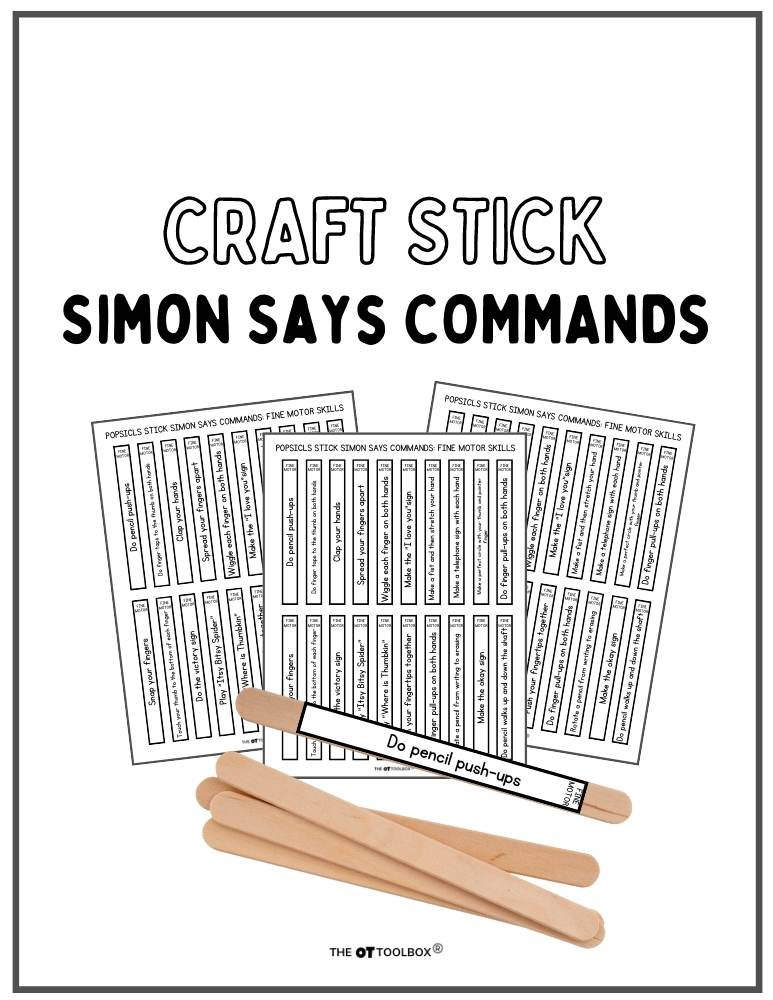
Free Alphabet Simon Says Popsicle Stick Labels
I am so excited to share this newest resource. All you need is a printable page with the popsicle stick Simon Says commands and craft sticks. We used the larger-size popsicle sticks to make the popsicle stick commands.
Kids can pull a craft stick out of a cup and use the command to create actions based on movements for each letter of the Alphabet. This set goes with our Alphabet Exercises blog post where each letter of the alphabet has a corresponding exercise or motor action.
Want a copy of these popsicle stick exercise labels? Enter your email address into the form below. OT Toolbox members can also find this printable inside the Member’s Club (along with the full list of Simon Says cards listed above in printable card form AND in popsicle stick label format).

Regina Parsons-Allen is a school-based certified occupational therapy assistant. She has a pediatrics practice area of emphasis from the NBCOT. She graduated from the OTA program at Caldwell Community College and Technical Institute in Hudson, North Carolina with an A.A.S degree in occupational therapy assistant. She has been practicing occupational therapy in the same school district for 20 years. She loves her children, husband, OT, working with children and teaching Sunday school. She is passionate about engaging, empowering, and enabling children to reach their maximum potential in ALL of their occupations as well assuring them that God loves them!


